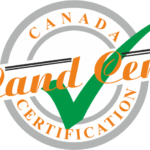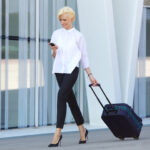Introducing Burkina Faso
About Burkina Faso
On the face of it you can see why Burkina Faso lacks mainstream appeal: a landlocked West African nation with rowdy neighbors, this country has a harsh climate, unforgiving geography and an infrastructure few would want to be at the mercy of. Set piece attractions are also lacking.
Yet Burkina Faso remains an enthralling destination for intrepid travellers, thanks to its wonderful inhabitants and dramatic landscapes. As such, the country, though not frequently visited, is a fine place in which to immerse yourself in West African culture.
Meaning “land of the honest people,” Burkina Faso proudly proclaims to be one of the friendliest countries in Africa – and visitors are sure of a warm welcome. Burkinabe, as the people of Burkina Faso are known, are the exact opposite of the harsh land that they inhabit – and it is these cordial and courteous people who make coming here such a joy.
Burkina Faso’s traditional cultures are best sampled in its two largest cities: the fabulously named capital, Ouagadougou (also known as “Ouaga”) and the second city of Bobo-Dioolasso (simply referred to as “Bobo”).
Both have large communities of artists, particularly Ouagadougou, which is famed for its music scene. The art and architecture of the capital are also worthy of attention, with several largescale sculptures enlivening the streets.
Away from the cities, Burkina Faso’s four national parks harbour a surprising diversity of wildlife. If you can’t explore them all, then do make a beeline for Arli, which is home a wide range of ecosystems and is an important habitat for West Africa’s last big cats and elephants. Hippos, monkeys and various exotic bird species also call this national park home.
Burkina Faso might not suit first time travellers, but for hardy adventurers this is a destination in which to veer off the tourist trail and discover the hidden gems of West Africa.
Language, Culture & History
History of Burkina Faso
Burkina Faso was once a part of the Great Mossi Empire, one of the strongest of ancient African kingdoms. The Mossi Empire was still in place when the whole region was annexed by the French in 1896. After a period as part of the colony of Upper Senegal-Niger, the territory was reorganized as the separate colony of Upper Volta in 1919.
It was then carved up between Cote d’Ivoire, Niger and French Sudan (now Mali) in 1932, only to be reconstituted as an independent entity in 1947, as a French Overseas Territory.
Internal self-government was granted in 1957, with full independence (as Upper Volta) following three years later. The early years of independence were largely dominated by the military, notably the regime of General Sangoule J Lamizana, who ousted the civilian government of Maurice Yameogo in 1966 and ruled until 1980.
Lamizana was followed by another military government, followed in turn by a rebellion in 1983, which brought a group of young radical officers to power under the leadership of Thomas Sankara, who changed the country’s name to Burkina Faso the following year. The Sankara government laid down a new political direction for the country, which had previously pursued a capitalist scheme of economic development. Particular emphasis was put on the development of the rural economy.
However, growing tensions within the ruling National Revolutionary Council came to a violent climax in October 1987, when Sankara was killed in a revolt led by his second-in-command, Captain Blaise Compaore. Under pressure from the international community and in particular France, a pluralist system of government was adopted in 1991.
Elections in 1998 and 2000 returned Compare and his party with substantial majorities but their integrity was undermined by opposition boycotts amid allegations of fraud and malpractice. He was eventually overthrown by popular revolt in October 2014 after attempting to extend his 27-year rule.
Since Compaore’s overthrow, the country is returning to democratic principles, despite a couple of further false starts, with the support of the African Union and regional body ECOWAS.
Did you know?
- Burkina Faso roughly translates as ‘land of the upright people’.
- The country is home to 63 different ethnic
- Burkina Faso has one of the highest fertility rates on earth, with the population increasing five-fold since
Burkina Faso Culture
Religion in Burkina Faso
More than 40% follow animist beliefs; 50% are Muslim and 10% Christian (mostly Roman Catholic).
Social Conventions in Burkina Faso
Women are always expected to dress modestly since this is a Muslim country. Within the urban areas, many French customs prevail. Dress should be casual and appropriate for hot weather (yet short skirts and shorts are best avoided). Lounge suits for men and formal wear for women are required for evening entertainment. Burkina Faso is a fascinating country because of its diversity: over 60 ethnic groups dwell in this country, proud to be Burkinabe, and yet keen to preserve their own social and cultural idiosyncrasies. Outside the cities, little has changed for centuries and visitors should respect local customs and traditions.
Language in Burkina Faso
The official language is French. Several other languages such as Mossi, Moore, Dioula, Peul, Fulfulde and Gourmantche are also spoken.
Geography & weather
Weather and climate
Best time to visit
Tropical. The dry season lasts from November to March and the rainy season from June to October. The best months are November to February when the Harmattan wind blows from the east producing dry and cool weather. However if you have allergies, avoid December to February as the Harmattan turns Burkina Faso into a dust bowl. Rainfall is highest in the southwest and lowest in the northeast. Avoid travelling in late March to May as the climate is too hot and dry to bear even for the locals.
Required clothing
Lightweights and rainwear for the rainy season. Plenty of scarves and handkerchiefs are recommended during the months when the Harmattan blows.
Geography
Burkina Faso is situated in West Africa and bordered to the north and west by Mali, to the east by Niger, to the southeast by Benin and to the south by Togo, Ghana and Cote d’Ivoire. The southern part of the country, less arid than the north, is wooded savannah, gradually drying out into sand and desert in the north. The Sahara desert is relentlessly moving south, however, stripping the savannah lands of trees and slowly turning the thin layer of cultivatable soil into sun-blackened rock-hard lakenite. Three great rivers, the Mouhoun, Nazinon and Nakambe (Black, Red and White Volta), water the Great Plains. The population does not live in the valleys along the river banks due to the diseases prevalent there.
Business opportunities
Doing Business in Burkina Faso
Suits should be worn for government and official business, otherwise a shirt and tie should suffice. Most officials prefer to wear national dress. French is the main language spoken in business circles and if the visitor does not have a command of French, interpreter services should be sought from the British Embassy.
Office Hours
Mon-Fri 0700-1230 and 1500-1730.
Economy
Mineral deposits, including gold and manganese, have been located, although comparatively little has been exploited – in August 1999, the country’s largest gold mine was closed as being unviable. Burkina Faso has a small manufacturing sector producing textiles, sugar and flour. New hydroelectric schemes should reduce the country’s dependence on imported fuels.Economic policy has been dominated by the liberalisation measures implemented by the Compaore government since the late 1990s, with particular stress on the reduction of the state sector, trade liberalisation and attraction of foreign investment. The economy has been growing at approximately 6% annually since 2000, although it is still very poor, with an average annual per capita income of US$300 and depends heavily on overseas aid, particularly from France and the Burkina Faso belongs to the CFA Franc Zone, which fixes the value of the local currency to that of the Euro (formerly the French Franc). Imports outweigh exports in value by a factor of five. Over one-third of exports are bought by France, which provides a similar quantity of Burkina Faso’s imports.
GDP
US$5.5 billion (2005).
Main exports
Cotton, shea butter, food and textiles.
Main imports
Machinery, electrical goods and agricultural products.
Main trading partners
Singapore, France, China, and Cote d’Ivoire.
Keeping in Touch in Burkina Faso
Mobile Phone
Roaming agreements exist with some international mobile phone companies. Coverage is available in the five main towns. Handsets can be hired (against a large deposit).
Internet
Available in some hotels and Internet cafes. There are Internet cafes in Ouagadougou and one in Bobo Dioulasso. Power cuts can hamper Internet use.
Media
The Ministry of Communication and Culture regulates the media. Despite practising self-censorship many media outlets, particularly private ones, are often critical of the government. Some journalists are reported to have been threatened or arrested. There are about a dozen private radio stations, a private television channel and many private publications.
Post
There are few post offices, but stamps can often be bought at hotels. There is no local delivery, and all other mail must be addressed to a box number. Airmail to Europe takes up to two weeks.
Post Office hours
Mon-Fri 0730-1230 and 1500-1730. The main post office in the capital is open Mon-Sat 0830-1200 and 1500-1830.
Plan your trip
Burkina Faso’s Journey
Flying to Burkina Faso
The national airline is Air Burkina (www.air–burkina.com). If travelling from the UK or the USA, options include flights with Air France (www.airfrance.com) via Paris or with Royal Air Maroc (www.royalairmaroc.com) via Casablanca.
Airport Guides
Borgo Airport
Code
BOY
The airport, 16km (10 miles) from Bobo Dioulasso, handles mainly domestic flights (see Getting Around).
TelephoneAddress
Ouagadougou Airport
Code
OUA
Location
The airport is 8km (5 miles) from the city.
TelephoneAddress
Flight times
From London – 8 hours 30 minutes (including stopover); New York – 17 hours 30 minutes (including stopover).
Departure tax
None.
Travelling to Burkina Faso by Rail
The only route is the international line from Abidjan, Cote d’Ivoire, running through to Ouagadougou.
Driving to Burkina Faso
Getting to Burkina Faso by boat
Staying there
Hotels
There are hotels in Ouagadougou, Bobo Dioulasso, Gorom Gorom and Gaoua with some air-conditioned rooms and additional facilities. Elsewhere there are small lodges. There is also a group of tourist-class bungalows at Arly National Park.
Grading: Hotels are rated by the government in stars.
Camping
May be allowed in certain areas. Usually only part of group excursions.
While you’re there
Places to see & do there
Cool down at Karfiguela Falls
A series of waterfalls and swimming pools along the Komoe River, Karfiguela Falls are a great place to both cool down and enjoy the natural beauty of the area. Though permanently flowing, the falls are at their best in or just after the rainy season, which can make reaching them by road an experience in itself.
Explore the bustling streets of Bobo Dioulasso
The lifeblood of Bobo Dioulasso, the largest town inhabited by the Bobo people, are the attractive streets around its bustling market, the Grand Marche. Other city attractions are the Musee Provincial du Houet with regional relics, arts and crafts, and the spectacular mud-brick Grande Mosquee in the Kibidwe district.
Go hiking in the southwest
The best areas for hiking are in the southwest of the country, around the Banfora escarpment, which offers excellent views of the whole region. The Senoufo region, west of Banfora, is also very pleasant, as is the Lobi region around Gaoua, southeast of Bobo Dioulasso. Mountain bike trips can also be arranged in these areas for those seeking adrenaline.
Marvel at Sindou’s rock formations
The seemingly endless geological landscape of fracturing peaks around Sindou provides a spectacular, and peaceful, contrast to Burkina Faso’s rapidly growing cities. Eroded into their current shapes by water over millennia, and heavily wrapped in local folklore, the peaks are one of the country’s finest natural wonders.
Mingle with royalty in Tiebele
Tiebele’s royal court is a large traditional Sahelian compound of vibrantly painted and windowless mud huts that are home to some 450 people. With low doorways and dark interiors these structures are traditionally built in a figure of 8. Black, brown, and white symbolic geometric designs adorn the outer walls, and are refreshed annually in February or March.
Peruse the wares at the International Arts and Crafts Fair
Held every two years in the capital, Ouagadougou, the International Arts and Crafts Fair is one of Africa’s most important trade shows and has been popular with bargain hunters since its inception in the early 1980s. Visitors can buy anything from jewellery and textiles to carvings and intricate metal work.
Uncover the Mossi Empire in Ouagadougou
An important centre of the Mossi Empire since the 15th century, Ouagadougou’s Ethnography Museum contains a substantial collection of Mossi artefacts. It became the permanent residence of the Moro-Naba emperor in 1681. The Bangr-Weoogo urban park, once the tribe’s sacred forest, provides the city with some much needed green space. Pabre, an ancient Mossi village, is a short distance away.
View Burkina’s varied game
Given Burkina Faso’s dry climate its four national parks – Kabore Tambi, Deux Bales, Arli and W – are perhaps surprisingly well-stocked, home as they are to some of Africa’s most renowned wildlife including elephant and big cats. South of Ouagadougou, near P6, the Reserve de Nazinga has a large population of elephants, antelopes, monkeys, baboons and warthogs, so don’t forget your binoculars.
Visit Hippo Lake
The Mare aux Hippopotames (or Hippo Lake) was created in 1937 around a fresh water lake, marshes and forests flooded by the Black Volta River. Home to around 100 hippos, it is also an important site for wetland birds. Visitors may be taken out in a pirogue to view the hippos for a small fee.
Wake early for the Moro-Naba ceremony
At around 0600 every Friday, the Nabayius Gou (‘the Emperor goes to war’) ceremony is performed at the Moro-Naba Palace in Ouagadougou. It depicts the magnificently bedecked emperor being restrained by his wife and subjects as he sets off to make war with his brother.
Nightlife & Shopping
Shopping in Burkina Faso
Good markets exist in Bobo Dioulasso, Dori, Gorom-Gorom, Ouahigouya and Ouagadougou. Bargaining in the traditional marketplace is recommended. Purchases include wooden statuettes, bronze models, masks, worked skins from the tannery in Ouagadougou, jewellery, fabrics, hand-woven blankets and leather goods and crafts ranging from chess sets to ashtrays. The Grande Marche in Bobo Dioulasso is much smaller and less cramped market.
Shopping hours
Mon-Sat 0800-1200 and 1500-1800. Some shops may be open Sunday and there are daily markets in the main towns.
Nightlife in Burkina Faso
Nightlife is particularly good in Ouagadougou and Bobo Dioulasso. There are several nightclubs in Ouagadougou, some with live music, and several cinemas, both open-air and air conditioned. Bobo Dioulasso has a lively street-cafe scene, good open-air bars and restaurants and a number of open-air and air-conditioned discos. The Wassa Club and Les Bambous are popular venues.
Meals & Beverages
Burkinabe cuisine is typical for West Africa, with staple foods including sorghum, millet, rice, maize, nuts, potatoes and yams. Mutton, beef and fish are common ingredients, while vegetables are recognizably European, with tomatoes, carrots, onions and spinach being fundamental to the country’s cuisine. In rural areas, meat is often replaced with fish or boiled eggs.
Unexpectedly, Burkina Faso is known for its tasty local strawberries. A range of banana varieties play an important part in both savoury and sweet dishes. Mangoes, papayas and coconuts (normally sold for their water rather than their flesh) are all readily available on the streets of even the smallest towns.
Specialities
Babenda: Stew of fish, fermented beans and cabbage or spinach.
To: Mashed sorghum or millet that is the traditional carbohydrate of all meals. Rizgras: Rice cooked with meat, tomatoes and onions.
Brochettes: Meat cooked on a skewer.
Sauce gombo: A sauce made from okra.
Pouletbicyclette: A grilled chicken dish popular across West Africa, served with carrots and potatoes.
Ragout d’Igname: Stew of vegetables and meat, frequently beef.
D8lo: Local beer made from pearl millet or sorghum wheat.
Gapalo: Drink of soured milk and millet grains.
Bissap: Drink made from bissap flowers.
Tipping Service is generally included in the bill (about 10 to 15%) although it is customary to tip taxi drivers, porters and hotel staff. Tipping is more expected in the better-class restaurants.
Drinking age
18.
Currently Unavailable
Before you go
Visa & Passport
| Other EU | Passport required Yes |
Return ticket required Yes |
Visa Required Yes |
| USA | Yes | Yes | Yes |
| Canadian | Yes | Yes | Yes |
| Australian | Yes | Yes | Yes |
| British | Yes | Yes | Yes |
Passports
A passport valid for three months beyond the date of departure from Burkina Faso is required by all nationals referred to in the chart above.
Visas
Visas are required by all nationals referred to in the chart above.
Nationals not referred to in the chart above are advised to contact the embassy to check visa requirements.
Visa Note
All nationals travelling to Burkina Faso require a yellow fever vaccination.
Types and Cost
Three-month single-entry tourist visa: £60; three-month multiple-entry tourist visa: £80; six-month single-entry tourist visa: £85; six-month multiple-entry tourist visa: £100.
Three-month single-entry business visa: £80; three-month multiple-entry business visa: £100.
US citizens pay US$140 for a five-year multiple-entry visa.
Validity
Visas are normally valid for three or six months. Validity begins two days before the proposed date of entry.
Application to
Nearest consulate (or consular section at embassy). In the UK, you should apply to the Honorary Consulate.
Working days
Allow three working days for visa processing. Applications may take longer if they are referred to the Ministry of Foreign Affairs in Burkina Faso.
Extension of stay
If you wish to extend your visa, you must contact the head office of the national police in Ouagadougou.
EU citizenship
For 30000 C
Open up new opportunities for living
Our visa and passport information is updated regularly and is correct at the time of publishing,
We strongly recommend that you verify critical information unique to your trip with the relevant embassy before travel.
Embassies and tourist offices
Ambassade du Burkina Faso in Belgium
Telephone: (02) 345 9912.
Website: http://www.ambassadeduburkina.be Address: , 16 Place Guy d’Arezzo, Brussels, 1180, Opening times:
Embassy of Burkina Faso in the USA
Telephone: (202) 332 5577.
Website: http://burkina-usa.org/
Address: NW, 2340 Massachusetts Avenue, Washington, DC, 20008, Opening times:
Honorary Consulate of Burkina Faso in the UK
Telephone: (0162) 862 1497.
Website: http://www.burkinafasovisa.co.uk/consul/index.html Address: , 2 Glynwood House, Bridge Avenue, Maidenhead, SL6 1 RS, Opening times:
Healthcare
| Title Yellow Fever |
Special precautions Yes* |
| Typhoid | Yes |
| Tetanus | Yes |
| Rabies | Sometimes |
| Malaria | Yes |
| Hepatitis A | Yes |
| Diphtheria | Yes |
*A yellow fever vaccination certificate is required from all travellers over one year o’ age.
Health Care
Health insurance is strongly recommended.
Food and Drink
Water is scarce and all water should be regarded as being potentially contaminated. Drinking water outside main cities and towns is likely to be contaminated and sterilisation is considered essential. Milk is unpasteurised and should be boiled. Powdered or tinned milk is available and is advised. Avoid all dairy products made from unboiled milk. Only eat well-cooked meat and fish. Vegetables should be cooked and fruit peeled.
Other Risks
Bilharzia (schistosomiasis) is present; avoid swimming and paddling in fresh water. Vaccination against meningococcal meningitis and hepatitis B is sometimes recommended. Hepatitis E and dengue fever occur. HIV/AIDS is prevalent. The hot dusty environment can exacerbate breathing problems. Rabies is present. For those at high risk, vaccination before arrival should be considered. If you are bitten, seek medical advice without delay.
Holidays
Below are listed Public Holidays in Burkina Faso
New Year’s Day
01 January 2020
Revolution Day
03 January 2020
International Women’s Day
08 March 2020
Easter Monday
13 April 2020
Labour Day
01 May 2020
Ascension Day
21 May 2020
Eid al-Fitr (End of Ramadan)
24 May 2020
Tabaski (Feast of Sacrifice)
31 July 2020
Revolution Day
04 August 2020
Independence Day
05 August 2020
Assumption
15 August 2020
Milad un Nabi (Birth of the Prophet Muhammad)
29 October 2020
Note: Celebrated S days later for Shi’a.
All Saint’s Day
01 November 2020
Proclamation of the Republic
11 December 2020
Christmas Day
25 December 2020
Holidays
Below are listed Public Holidays in Burkina Faso
New Year’s Day
01 January 2020
Revolution Day
03 January 2020
International Women’s Day
08 March 2020
Easter Monday
13 April 2020
Labour Day
01 May 2020
Ascension Day
21 May 2020
Eid al-Fitr (End of Ramadan)
24 May 2020
Tabaski (Feast of Sacrifice)
31 July 2020
Revolution Day
04 August 2020
Independence Day
05 August 2020
Assumption
15 August 2020
Milad un Nabi (Birth of the Prophet Muhammad)
29 October 2020
Note: Celebrated S days later for Shi’a.
All Saint’s Day
01 November 2020
Proclamation of the Republic
11 December 2020
Christmas Day
25 December 2020










